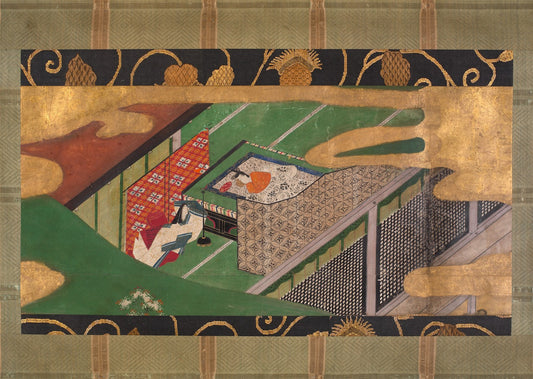Siegfried Zademack's Otherworldly Paintings
Self-proclaimed “fantastic-surreal” painter Siegfried Zademack unveils the supernatural world of his mind in his obscure paintings. The Bremen-born artist takes stylistic inspiration from European art’s most influential painters. More specifically, Zademack focuses his interests on the Mannerism movement—an art movement that emerged during the later years of the Italian High Renaissance period, from around 1520 to 1530. Since 1980, Zademack has dedicated his life to freelance painting unsettling yet hypnotizing works of art.
The horror genre in the art world has a strong foundation. Artists like Francisco de Goya, Henry Fuseli, and Francis Bacon have exemplified how a painting can portray vivid horror. Zademack’s work is spooky but not in the nightmarish style reminiscent of Goya. Zademack’s work leans towards a desolate, uncomfortable feeling that makes you shift in your seat. While his work is undoubtedly unique, it’s difficult not to mention the similarities between it and René Magritte’s. Both artists, like many, stick with motifs throughout most of their paintings. But what makes Magritte and Zademack alike is their consistency across their work. Magritte continuously depicts a man wearing the same hat. Zademack has a few recurring symbols throughout his work that help viewers quickly identify his work.
“The Son of Man” (1946), René Magritte. Photo from San Francisco Museum of Modern Art. “Lightheartedness” (2011), Siegfried Zademack. Photo from The Surrealism Website.
Motifs and Meanings
Candles + Fire
In general, candles symbolize a gleam of light in the middle of darkness, especially during a hardship in someone’s life. It also is the symbol of holy illumination. The Catholic church ritualizes the lighting of candles for every mass for this specific reason. Zademack’s application of candles and fire in his paintings is not far from this generalized definition.

Ignoring the sacrilegious tone throughout Zademack’s entire art collection is nearly impossible. Though his relationship with religion is publicly unknown, his inspiration drawn from Christianity is undeniable. In his piece “Purgatory” (2018), Zademack illustrates the infamous description of Dante’s “Purgatorio.” The candles in this scene are not to bring light into someone’s life for the better, but to illuminate their reality instead. Those suffering in purgatory have to live with their sins until they deem themselves worthy enough to enter Heaven. The sheeted figures (also a motif) carry sticks with red candles as they pass through a crowd of naked men and women lying on the ground. Zademack’s painting is likely the opening gates of purgatory, not unlike Dante’s description of the Terrace 7: Lust. Thus, the naked men and women are displayed covering the ground in shame for living a lustful life.
Sheeted Ghosts
Traditionally a silly Halloween costume, sheeted ghosts play a recurring role in Zademack’s artwork. Sheet ghosts evolved into a symbol for someone who died because poorer families (specifically in the 18th and 19th centuries) would wrap their loved ones in their bed sheets as a casket. Zademack uses sheet ghosts as a message to his viewers. While these ghosts are dead, they are typically the most animated subjects in his paintings. For example, in “Purgatory,” the ghosts move around while the others lie suffering. The sheet ghosts could also represent a power dynamic present throughout Zademack’s paintings. His other piece, “The Legend of the Unknown Constant” (2002), features a crowd of bedsheet ghosts carrying weights as a naked man hangs by ropes—similar to a puppeteer. The ghosts mimic the man’s stance as they meander through the infinite desert.

Following the religious tone in Zademack’s art, the naked man is positioned like Jesus on the cross when he died. “The Legend of the Unknown Constant” critiques Christianity and how its followers look up to Jesus in hopes of emulating his actions. From an outside perspective, one may view this behavior as a “Simon Says” game: do what I do and say, and you will live. The religion is based on following the word of God and using his son as an example of how to live and love. Interestingly, Zademack placed weights in the hands of the naked man—potentially suggesting the weight we carry as we navigate life. Other motifs throughout Zademack’s catalog include nude bodies, rope, clocks, and wooden puppets.
Sometimes, however, art is haphazard and drifts from the artist’s signature motifs and defining details.

“Cowboy Mentality” is a conglomerate of iconic modern, historical, and religious figures. While this piece is overarchingly surreal, some details point to other historical art movements, to include Abstract Expressionism, Classicism, and Pop Art. A line of these iconic figures forms as they wait to approach a headless cowboy holding a gun; his head is replaced with a reel and rope, pulling his victims towards him. Bringing up the rear is an astronaut, likely a reference to one of the men who first walked on the moon. As the line continues, we see Adolf Hitler pushing the Discobolus statue in a wheelchair, a headless Pope holding a half-cut pig, Marilyn Monroe wearing boxing gloves while an emancipated child stands by her feet. It’s a lot to take in and, at first glance, means nothing.
It is interesting to see the lineup not formed chronologically. The viewer sees Jesus in a crucifix coffin at the end of the line, the Pope towards the front, and Discobolus towards the middle—apparently disregarding history’s timeline.

“Cowboy Mentality” is a visual representation of a commoner (a cowboy) determining the death of history. Marilyn Monroe is a symbol of pop culture and Pop Art. The Discobolus is a symbol of the Roman ages. Hitler symbolizes one of humanity’s darkest periods and the time of Abstract Expressionism (1940s). Jesus represents the beginning of our salvation. But at the front of the line is an anonymous man with the weapon, determining each character’s death. Modernity has control to ultimately and effortlessly end all of history. Climate change. Atomic bombs. World wars. World hunger. All in the control of man.
Siegfried Zademack’s artwork is an otherworldly, haunting collection of his inspirations. The heavy influence on religion seeps through most of his pieces. Depicting eerie bedsheet ghosts in Purgatory and Adolf Hilter pushing a 2000-year-old statue in a wheelchair waiting to be killed, Siegfried Zademack has mastered the art of overlapping meaningful and meaningless concepts.
©ArtRKL™️ LLC 2021-2024. All rights reserved. This material may not be published, broadcast, rewritten or redistributed. ArtRKL™️ and its underscore design indicate trademarks of ArtRKL™️ LLC and its subsidiaries.







